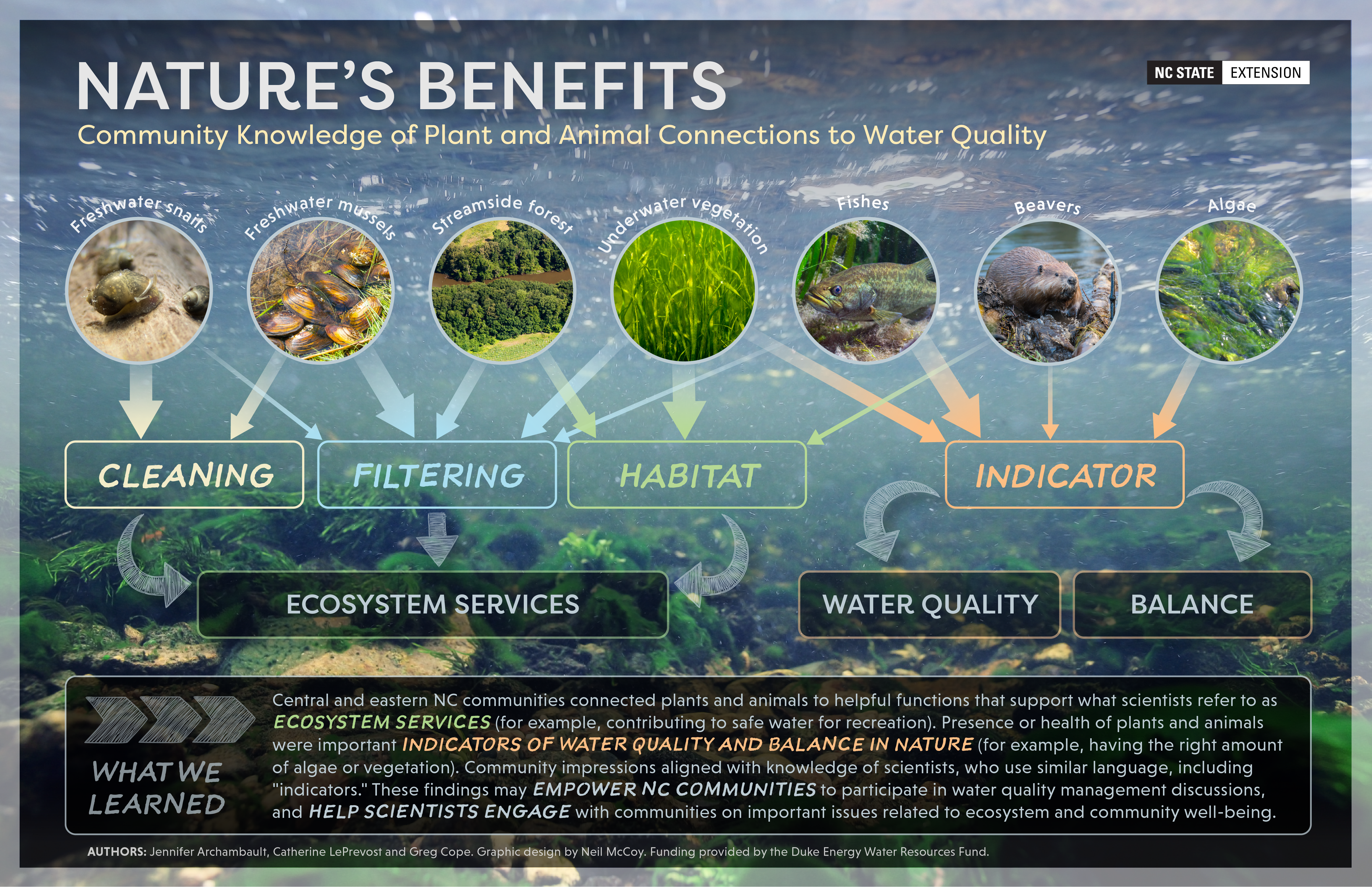We connected with communities in central and eastern North Carolina during the spring and summer of 2019 to learn about their views on nature’s contributions to water quality. The infographic above summarizes the wealth of knowledge community members shared when we showed pictures of plants and animals and asked what they thought about their relation to water quality. Download a PDF of the infographic here. The full results of this study were published in my dissertation in March 2020.
Though aquatic species are integral to ecosystem functioning and maintenance of water quality, most are not readily perceivable by the public, and people may not realize the relevance of these ecosystem components in regulating healthy waterways for human use and well-being. It is imperative to capture how these resources are valued by communities because improved understanding of community values is a critical component of promoting effective watershed management. A first step in understanding the community valuation of ecosystem services related to water quality is investigating public perceptions of water quality’s mediating factors.
In this study, we engaged 57 residents in central and eastern North Carolina in six focused small group discussions, using a series of photographs of plants and animals, including freshwater mussels, to examine communities’ beliefs about whether and how those flora and fauna relate to maintenance of water quality. In the coastal region, we talked to coastal fishermen and students at a community college. In the central portion of our study area, we engaged a group of farmers and members of a tribal community. In the upper watershed portion of our study area, we talked with members of a conservation group and residents who were patrons of programs at an urban Cooperative Extension Center.
